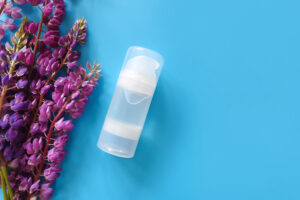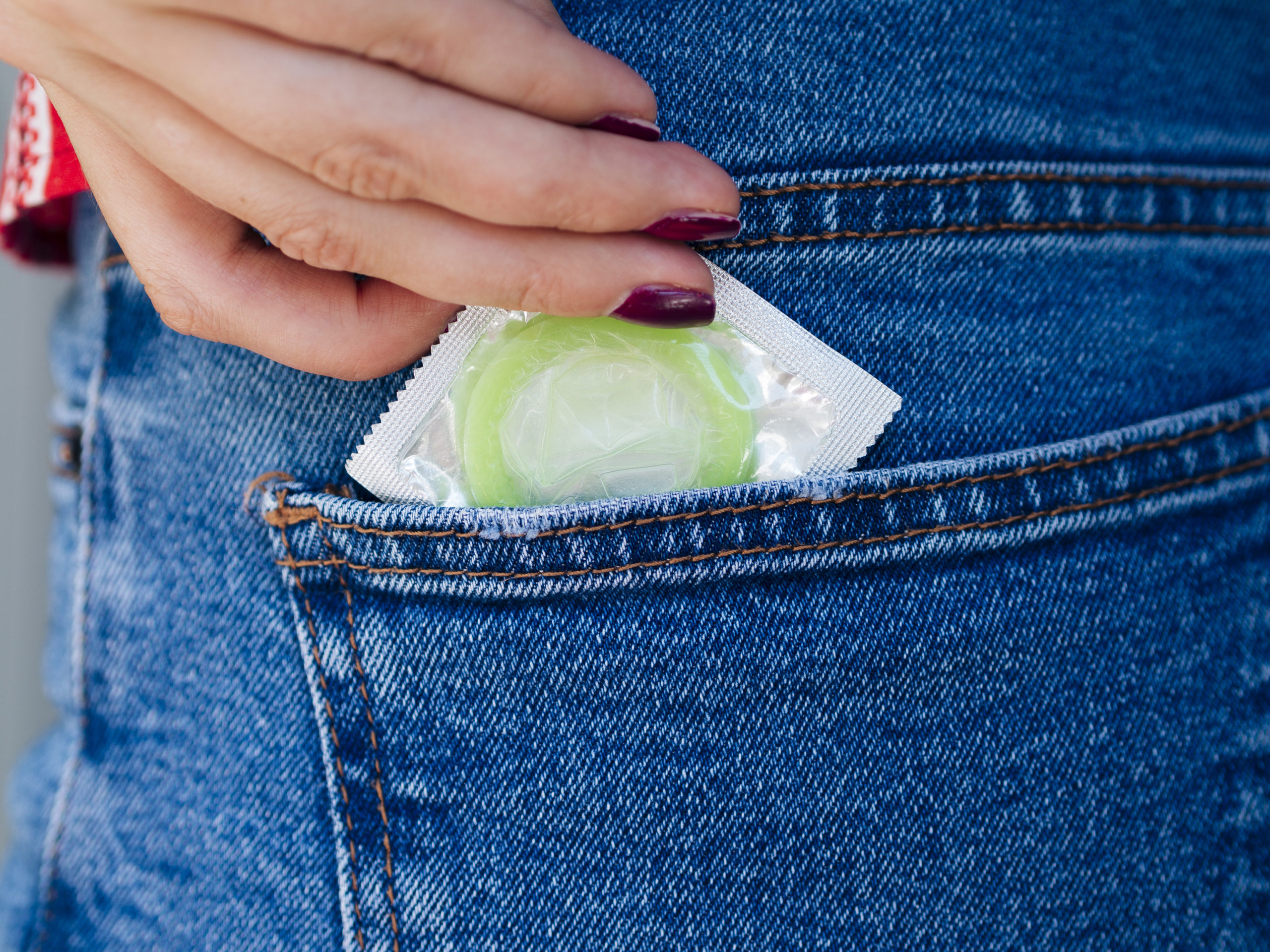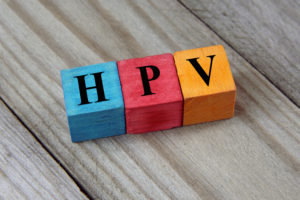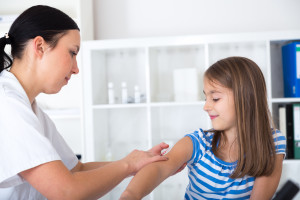By Iris Farrou
07 Sep, 2022
Lifestyle Tips, Menopause, Peri-Menopause, Prevention, Queer Health, Reproductive health, Sexual health, Women's Health
Aging and Painful Sex, Body Changes In Menopause, Easing the Symptoms of Menopause, Lubricants, Lubrication, Painful Intercourse, Peri-Menopause Health, Preparing for Menopause, Sex-Positivity After Menopause, Sooth Vaginal Pain During Intercourse, treatments for vaginal dryness, Vaginal dryness
One of the most often talked about symptoms of menopause is vaginal dryness. It would be ideal if it only showed up when menopause started, but unfortunately it can start happening even a few years before menopause. Just as a bonus, women can also experience vaginal dryness after childbirth, while breast feeding, or even if they are taking certain allergy medicine or certain antidepressants.
years before menopause. Just as a bonus, women can also experience vaginal dryness after childbirth, while breast feeding, or even if they are taking certain allergy medicine or certain antidepressants.
Back to the hormonal factors, however, vaginal dryness begin hand in hand with vaginal atrophy. A truly scary word, though it simply means your body is not producing as much estrogen as before. Estrogen is responsible for the natural lubrication, elasticity, and thickness of the cervix: once estrogen production goes down, the natural lubrication of the vagina is no longer happening, and the vaginal walls can experience thinning, drying, and possible inflammations.
Lubrication
Basically, it all comes back to lubrication: since your body’s natural lubrication system retires at the age of menopause, you need to supplement vaginal lubrication via external (internal) means. Most often, especially because vaginal dryness can lead to pain during intercourse, women will turn towards vaginal lubricants. Though a great solution, it is but temporary. For something more long lasting, you may want to look into vaginal moisturizers. You can apply them every few days to moisturize and keep vaginal tissue healthy.
There is also the option to reinvigorate vaginal tissues. Science really does wonders… this can be
a low dose vaginal estrogen cream, tablet, or ring. Note that this can be prescribed in additional
to other hormonal supplements you may be taking. It is meant to specifically tackle vaginal
dryness, especially if it persists while you are on hormonal treatment post-menopause. You will
need to discuss this option with your doctors and take into consideration any other health issues
you may have faced, particularly breast cancer.
There is also the option of an oral medication, Ospemifene or Osphena, which is more geared
towards addressing vaginal pain during intercourse. It is a selective estrogen receptor modulator,
SERM, medication but women who have a high risk of breast cancer, or have faced breast
cancer, best not consider it as an option. For more details on what this medication can do for you,
consult with your doctor or medical professional.
Another technique to help you ease painful intercourse if you are post-menopausal is a nightly
vaginal suppository containing dehydroepiandrosterone (DHEA).
It’s also important to note that vaginal stimulation or even regular sexual activity, solo or with a
partner, can absolutely help post-menopausal women keep their vaginal tissues healthy. Above
all, remember this is a very natural response of your body to hormonal changes, there is nothing
to be ashamed about, and it is well within your rights to seek healthy treatments that work for
you and your body. You owe it to yourself, and though we can’t turn back the clock, we can
make sure we are living pain-free and comfortable lives within the new parameters our bodies
present to us.
More
By Iris Farrou
05 Aug, 2022
Lifestyle Tips, Prevention, Procedures, Queer Health, Reproductive health, Sexual health, Women's Health
BRCA Gene, Cancer Screening, Cervical Health, how often pap smear, How often should you see OBGYN, HPV, Pap smear, Regular STD Testing, Screening, Test, When Should I Start Seeing a Gynecologist
The most common gynecological care procedure may be the Pap Smear—and it’s no secret that
it revolutionized women’s health and made it widely accessible—but a close second is cervical
cancer screening. Now, don’t let the words scare you: it doesn’t mean you have to get this
screening done if you are suspecting you have cancerous cells. It simply means this screening
tests specifically for evidence of HPV in the uterine cervix. A Pap Smear, on the other hand, tests
for precancerous cells on the cervix—cells that may turn cancerous if not treated correctly.

How does it happen?
Cervical cancer screening is a similar procedure to a Pap Smear: they both happen in a clinic, a
medical office, or a community health center. It’s common to get those tests done during a pelvic
examination. Much like the Pap Smear, using a vaginal speculum, the medical professional will
collect cells and mucus from the cervix and vagina and send them for lab testing. A Pap Smear
checks to see if the cells look generally normal. A cervical cancer screening specifically tests the
cells for HPV.
Why do I need it?
Remember the primary goal of a cervical screening is to routinely look for abnormal cervical
cells with severe cell changes so they can be removed, and cancerous cells can be stopped from
developing. It is a routine examination for anyone who has a uterine cervix and is sexually
active. Nearly all types of cervical cancer are caused by sexually transmitted HPV. A secondary
goal of this screening is to identify cervical cancers at an early stage so they can be treated
successfully and avoid further problems.
When should I get tested?
Most sources suggest that you should start getting Pap Smears and Cervical Screenings after the
age of 21. However, many people are sexually active before that age—you should be getting
regular routine examinations as soon as your become sexually active. The standard suggestion is
to be screened every 3 years, considering your results come back normal, but if you have
personal concerns and the ability to be tested every year—better safe than sorry!
If you are older than 65 and have had regular tests and satisfying results for several years in a
row or have had your cervix removed for non-cancer related reasons, you may not need to be
screened anymore. However, that is still a personal decision, and you are entitled to be keeping
as many tabs on your health as you want.
More
By Iris Farrou
21 Sep, 2021
Sexual health
Best gyns in Buffalo, Best OB practices in Buffalo, Best OBGYN Groups in Buffalo, Buffalo OBGYN, Chouchani MD, WNY OB-GYN, WNY Ob-gyn doctors, WNY OBGYN, women's health, women's health tips
 Most couples are familiar with the use of lubricants when being intimate with each other, and many women may even use them on their own. Lubricants are typically essential in every sexually active household, and with so many personal gels and moisturizers out there to choose from, which ones are truly the healthiest for our vaginas and their pH balance?
Most couples are familiar with the use of lubricants when being intimate with each other, and many women may even use them on their own. Lubricants are typically essential in every sexually active household, and with so many personal gels and moisturizers out there to choose from, which ones are truly the healthiest for our vaginas and their pH balance?
It’s a common myth that water and silicone-based lubricants can disrupt vaginal pH balance and/or cause infections. The amount of acidity or alkalinity in a water-based environment, known as pH, is best between 3.5 and 4.5. Comparatively, the pH of semen is 7.0 to 8.5, and rectal pH is around 7.0. Our personal and partner’s hygiene is pivotal to helping keep our pH balance in check, especially when there are different pH balances involved.
Choosing a Lubricant
There are so many new lubricants on the market claiming to be natural and organic, it can sometimes feel overwhelming. You may be wondering, “are they really better for me?” If you have sensitive skin in your vaginal area or are prone to bacterial vaginosis (also known as Candida bacteria), natural and organic may be the way to go. Here are some of the best available to keep everything feeling fresh down there:
- Aloe Life Personal Gel Moisturizer Unscented
- Nuvia Organics Evening Primrose Oil
- Sustain Organic Lubricant
- H2OH! Water Based Lubricant
- Good Clean Love Almost Naked Organic Personal Lubricant
These are just a few of the best rated, healthy, and balancing personal moisturizers on the market. There are even brands of olive oil that are specifically for lubrication! However, since this is a very personal matter, you should always choose carefully based on how your body is experiencing different elements. Some women are extremely sensitive to oil-based lubricants, so if that sounds like you, it is advisable to go for a water-based one. Additionally, some may be sensitive to additional odors. Whether that is you or your partner, you may want to consider avoiding scented lubricants—even if the scent is organic.
Attention Points
- If at any point you experience irritation with a product, discontinuing usage and safely cleaning the area with plenty of water, patting dry from front to back with clean toilet paper, and contacting your primary care physician should symptoms occur is pivotal.
- It is also important to remember that oil-based lubricants, even plain olive oil that can be used for lubrication, heighten the risk of condom breakage.
- Warming lubricants should also be avoided, as they disrupt the vaginal pH. You can naturally warm a lubricant at room temperature before use.
- Avoid using internal products that don’t fall within our normal 3.5 to 4.5 natural pH range and douche as infrequently as possible, as it rinses out the healthy bacteria in our vaginas. Also avoid scented soaps and talcum powder. Opt for showers instead of baths.
More
By Iris Farrou
19 Mar, 2021
Queer Health, Sexual health, Women's Health
Best gyns in Buffalo, Best OB practices in Buffalo, Best OBGYN Groups in Buffalo, Buffalo OBGYN, Chouchani MD, queer health, WNY OB-GYN, WNY Ob-gyn doctors, women's health

Many of the gynecological health issues associated with heterosexual women are also concerns of queer women, including homosexual and bisexual women. However, because queer women are not generally concerned with mainstream gynecological health issues, such as pregnancy and contraception, they may find it difficult to receive adequate support from healthcare professionals, or access unbiased and non-discriminatory resources. It should also not be forgotten that minority populations tend to experience higher levels of social anxiety, stress, and depression. As such, the higher levels of mental healthcare that queer women need, along with the lack of resources targeted specifically to them, places them at a precarious position when it comes to sexual and gynecological health.
Gynecological Care Tips
While the following tips and areas of concern to be noted may not apply to everyone, as sexual health depends on sexual preferences, family history, overall health, and health among other factors, these have been identified as the most common areas of concern among queer women.
- Bacterial Vaginosis: Lesbian women that seek care for bacterial vaginosis at women’s health clinics have been found to be twice the rate compared to heterosexual women. Bacterial vaginosis has been found to be associated with a higher number of female sexual partners, though its transmission mechanism is only hypothesized to be oral sex.
- Yeast Infection: Though not identified as a sexually transmitted infection, yeast infections can occur through direct skin contact with someone who harbors the organism. As far as lesbian sexual relations are concerned, this transmission may occur due to vulva-to-vulva connection, or through the transmission of the bacteria from the fingers to the vagina.
- Herpes, HPV, Hepatitis: Common as these are, they are also present in queer women’s intimate relationships—vaccinations against these infections, as well as practicing safe sex and maintaining personal hygiene and health minimize the risk of contraction.
Mental Health Care Tips
Sexual minorities do not only experience higher levels of stress and depression, but they also experience social discrimination and isolation. This can lead to a conglomeration of mental health issues, but most notably it tends to lead to queer women remaining silent when it comes to domestic abuse and intimate partner violence.
This silence is primarily associated with the general misconception that abuse is present only in heterosexual relationships, and it is also attributed to fear of discrimination. Though the discrimination and the experienced violence may be directly related, as queer women have been found to experience mental, physical and verbal abuse that targets their sexual orientation, it may also be indirect. Lack of training in part of service providers or discrimination in shelters create more difficulties for queer women who seek support against intimate or domestic violence, which in turn leaves them in abusive situations for a longer period of time.
It should also be taken into consideration that the fear of being “outed,” not receiving adequate support from health providers, friends, and family, or the fear of social and intimate isolation are factors that contribute to the higher rates of violence and abuse in queer women’s relationships. If you are experiencing partner violence, consider reaching out for support to a trusted individual, or conducting research on domestic violence support that may assist you in creating a plan to leave the abusive environment.
More
By Iris Farrou
26 Feb, 2021
Lifestyle Tips, Sexual health
Best gyns in Buffalo, Best OB practices in Buffalo, Best OBGYN Groups in Buffalo, Buffalo OB-GYN, Buffalo OBGYN, Chouchani MD, WNY OB-GYN, WNY Ob-gyn doctors, WNY OBGYN, women's health

According to the CDC, human papillomavirus (HPV) is the most common sexually transmitted infection (STI), while other sources report that about 14 million people become infected every year. Both men and women can contract HPV. It is estimated that though 80% of sexually active individuals are likely to have it during their life, not all of them know they have the virus. Some types of the virus can cause warts or cancer, while other types go away on their own. However, contracting the disease once does not exclude one from getting it again.
Causes and Transmission
HPV can be transmitted relatively easy when skin on skin contact with someone who has it occurs. Most commonly, this occurs with sexual contact and during vaginal or anal sex. It may also be transmitted during childbirth, from the mother to her baby. In many instances, HPV causes no symptoms, which can make it rather hard to even suspect its presence. Additionally, if you have contracted the virus it can take years to show any symptoms so identifying when you first became infected becomes a challenge. The most common symptom is warts, which are usually bumps in the genital area—either flat or raised. In other cases, when the virus does not go away it can cause different types of cancer.
It is recommended that you not only get tested regularly for STIs, and keep up with Pap smears, but that you also specifically request an HPV test. Regular Pap smear results do not exclude the possibility of HPV; in ages over 30, you may also want to consider screening for cervical cancer.
HPV and Cancer
Like with other symptoms of HPV, it can take many years after it is contracted to form into a type of cancer. Usually, the virus causes cervical cancer but it can also cause cancer of the vulva, penis, or anus. It may also cause oropharyngeal cancer, which is located at the back of the throat, base of the tongue and tonsils.
Though there is no cure for HPV itself, there are treatments for warts and for different types of cancer. The most usual treatments for women include colposcopy, where the cervix is closely examined for pre-cancerous cells, cryotherapy which freezes and removes pre-cancerous cells from the cervix, and Loop Electrosurgical Excision Procedure (LEEP) the removes the pre-cancerous cells using an electrical current.
HPV Prevention and Vaccine
Similar to the prevention of any STI, limited sexual contact, safe sexual practices, and regular health checks are good measures to stay safe. The HPV vaccine, however, increases chances of preventing warts and cervical cancer caused. Though the HPV vaccine recommended age is 11 to 12 years old and before the existence of sexual contact, it is still possible to get the vaccine even if you are sexually active already. Remember that the HPV vaccine does not protect against all types of cervical cancer and in most cases it is given in three separate shots.
More

Millions of American’s are infected with sexually transmitted diseases (STDs) every year. STDs are passed from person to person through intimate physical contact, including vaginal, oral, and/or anal sex. Many STDs show no signs or symptoms (known as asymptomatic), however, even with no symptoms, the infection can be passed to sexual partners. Therefore, STD testing should be conducted regularly for anyone sexually active.
Types, Symptoms, and Treatments
Chlamydia
As the most commonly reported STD in the U.S., chlamydia is a bacterial infection of the genital tract spread through vaginal, oral or anal sex. It can be hard to detect because not all women have symptoms. When present, symptoms are usually mild and may include pain when urinating, vaginal discharge, lower abdominal pain, and bleeding between periods.
Treatment: chlamydia can be easily cured with antibiotics.
Gonorrhea
Another bacterial infection in the genital tract, gonorrhea can also grow in your mouth, throat, eyes, and anus. Symptoms can start as early as 10 days after exposure, but many people will not experience symptoms for months. Symptoms may include a thick vaginal discharge, heavy bleeding during or between periods, pain when urinating or during bowel movements, and anal itching.
Treatment: gonorrhea can be cured with prescribed medications.
Syphilis
Another bacterial infection, syphilis affects the genitals, skin and mucous membranes, but it can also involve other parts of your body, including the brain and heart. Symptoms occur in three stages, with early signs being a small painless sore at the sight of infection. As symptoms progress, they may include penny-sized sores, fever, fatigue, soreness, and enlarged lymph nodes. If untreated, syphilis can lead to blindness, paralysis, dementia, and numbness.
Treatment: Syphilis can be cured with the right antibiotics, however, treatment will not undo any damage that the infection has already caused.
Trichomoniasis
This common STD is caused by a microscopic, one-celled parasite. Symptoms typically occur in five to 28 days of exposure and range from mild to severe. Symptoms may include clear or cloudy vaginal discharge, vaginal order or itching, and pain when urinating.
Treatment: trichomoniasis can be cured with a single dose of antibiotics.
Human papillomavirus (HPV)
Most sexually active people will get HPV at some point in their lives. HPV puts women at higher risk of cervical cancer. There are more than 100 strains of HPV and many do not cause symptoms, however, certain strains will cause genital warts.
Treatment: There is no treatment for the virus itself, but there are treatments for health problems caused by HPV. Additionally, there is a safe and effective vaccination to protect against HPV that is recommended for anyone 11 years or older.
Hepatitis
Hepatitis A, B, and C are contagious viral infections that affect the liver, however, hepatitis B and C are more serious. Not all people will develop symptoms, but those that do may experience fatigue, nausea, abdominal pain, fever, muscle pain, itching, loss of appetite, or jaundice.
Treatment: hepatitis A and B often go away within four to eight weeks on their own. New drugs are being used to treat and possibly cure hepatitis C.
Genital Herpes (HSV)
A highly contagious STD caused by a type of the herpes simplex virus (HSV). HSV enters the body through small breaks in the skin or mucous membranes. Signs and symptoms are very mild and frequently go unnoticed, so many people with HSV never know they have it.
Treatment: While there is no cure for herpes, medication can reduce symptoms and make it less likely to spread to others.
HIV
An infection with the human immunodeficiency virus, HIV interferes with the body’s ability to fight off viruses, bacteria, and fungi that cause illness. It can lead to AIDS, a chronic, life-threatening disease. Early symptoms may include headache, fever, sore throat, swollen lymph glands, and fatigue.
Treatment: There is no cure, but treatment will help to prevent complications and spreading.
Takeaway
As shown above, some STDs can be “easily” cured in a simple dosage of antibiotics, while others cannot be cured. The safest measure is to use protection in the form of latex condoms. Adults in monogamous relationships should have both partners checked for STDs before considering unprotected intercourse. Lastly, have all young adults 11 to 26 vaccinated against HPV.
More
 Genital warts are an important topic because they are the most commonly sexually transmitted disease. Genital warts are caused by the genital human papillomavirus (HPV). According to the Center for Disease Control and Prevention (CDC), roughly 79 million Americans are infected with HPV. Many people infected with HPV will not experience visible warts or any symptoms; however, even without symptoms HPV can lead to higher risk of developing certain types of cancer.
Genital warts are an important topic because they are the most commonly sexually transmitted disease. Genital warts are caused by the genital human papillomavirus (HPV). According to the Center for Disease Control and Prevention (CDC), roughly 79 million Americans are infected with HPV. Many people infected with HPV will not experience visible warts or any symptoms; however, even without symptoms HPV can lead to higher risk of developing certain types of cancer.
Signs and Symptoms
Genital warts appear as bumps or groups of bumps in the genital area. They can be large, small, raised, flat, or clustered. Typically genital warts are diagnosed from a visual exam by a healthcare provider. In most cases, HPV will go away on its own and will not cause health problems; however, some cases can be associated with cervical, vulvar, anal, and penile cancers.
Prevention
The only completely effective way to prevent an HPV infection is abstinence. Additionally, monogamous relationships between two people who have been recently tested and disease-free is also viewed as relatively safe. The virus is spread from skin-to-skin contact, so latex condoms do not offer full protection, though condoms can help reduce the chance of being infected, when used correctly.
The HPV vaccine is also available to everyone ages 9 to 45, although it’s recommended that children ages 11 or 12 get the vaccine before they become sexually active. The HPV vaccine protects against genital warts and/or different types of HPV that can cause cancer.
HPV and Pap Smears
Woman ages 21 to 65 should schedule routine screening for cervical cancer through Pap smears. Woman with the HPV virus will need more frequent Pap smears since the presence is associated with cervical dysplasia and cervical cancer.
Treatment
Treatment varies by case, but can include applying chemicals or creams, in an effort to get the warts to stop growing and go away. Other treatments include freezing, burning with electric current, or removing them with a knife or wife and electricity (LEEP). While these procedures may sound scary, they will remove the warts, thus lowering the symptoms and chances of passing them on.
Talk to your doctor
If you think that you have genital warts or if you are interested in measures to protect yourself from HPV, talk to your doctor. Genital warts are nothing to be embarrassed about. Your OB-GYN is knowledgeable in prevention and treatment and can help put you at ease.
More
If you’ve ever wondered if you’re healthy down there, you’re not alone. Women’s bodies are complex entities, and it feels like they are continually giving us cues about our overall health. If you find yourself scrutinizing those cues, you’re wise to strive to understand your body and its physical signs better. An important indicator of your sexual health is your vaginal discharge. Whether you haven’t paid much attention to your discharge in your past, or you’ve always wondered if what you see is “normal,” it’s time to familiarize yourself with the signs of healthy and unhealthy vaginal discharge. Doing so will help you identify any possible symptoms of a potentially serious condition, and indicate that you may need to make an appointment with your gynecologist for a professional exam and possible treatment.
What is Vaginal Discharge?
Women first begin to produce vaginal discharge when they start to menstruate. Vaginal discharge is a way for the vagina to self-clean, and a means to expel cells and fluid. The production, consistency, and amount of discharge a woman’s body produces varies by individual and can change throughout her menstrual cycle—and her life. In addition to the menstrual cycle, factors that may impact a woman’s vaginal discharge include pregnancy, hormones, or the presence of an infection.
What Does Healthy Vaginal Discharge Look Like?
Healthy vaginal discharge is similar to the mucus that is produced and expelled by your nose. It may be light gray to white, thick, a little slippery, and stringy (think the consistency of some hair gels). Around the time that women ovulate, they experience an increase in vaginal discharge that becomes more slippery and stretchy (think the consistency of egg whites). Women typically experience less discharge during the days immediately following the end of their period.
What Does Unhealthy Vaginal Discharge Look Like?
Your vaginal discharge may be abnormal—a sign of a possible health issue—if it:
- Is accompanied by an unpleasant smell.
- Changes in color, particularly if it becomes grayish, greenish, or resembles pus.
- Develops a foamy texture or is the consistency or cottage cheese.
- Is accompanied by burning, swelling, redness, and extreme itching.
- Occurs with vaginal bleeding that is not due to your period.
What May Cause Unhealthy Vaginal Discharge?
You will want to make an appointment with your gynecologist for an official exam and diagnosis, but if you observe abnormal discharge, it may be due to:
What to Do if You Think Your Discharge is Unhealthy?
If you have any concerns about your vaginal discharge, especially if you are experiencing pain or discomfort in your vaginal area or your pelvis, make an appointment to see your gynecologist. He or she can diagnose your symptoms and provide you with a treatment plan if necessary.
More
 Lesbian and bisexual women are susceptible to contracting STDs or viruses from skin-to-skin and mouth-to-genital contact, as well as sharing sex toys and exchanging vaginal fluid or menstrual blood through manual stimulation. By not following safe sex practices, same-sex female couples are at risk of such STDs as chlamydia, syphilis, gonorrhea, and HIV. Women are also especially at risk of contracting human papilloma virus (HPV), a virus linked to the development of cervical cancer. To minimize your chances of contracting an illness, follow the same sex safe sex recommendations below.
Lesbian and bisexual women are susceptible to contracting STDs or viruses from skin-to-skin and mouth-to-genital contact, as well as sharing sex toys and exchanging vaginal fluid or menstrual blood through manual stimulation. By not following safe sex practices, same-sex female couples are at risk of such STDs as chlamydia, syphilis, gonorrhea, and HIV. Women are also especially at risk of contracting human papilloma virus (HPV), a virus linked to the development of cervical cancer. To minimize your chances of contracting an illness, follow the same sex safe sex recommendations below.
- Follow Low-Risk Practices. Hugging, massaging, touching, and masturbation are intimate practices that offer the lowest risk of infection, second only to abstinence. They are also particularly valuable safe intimacy acts to practice if you are not in a monogamous relationship.
- Use Protection. Oral sex offers a lower risk for spreading and contracting STDs than anal and vaginal sex, but there are still risks. Same-sex female couples should protect themselves using a vulva dam or dental dam.
- Practice Good Hand and Nail Maintenance. For women who practice manual stimulation on one another, they could still put themselves at risk of injury or infection. Make sure your nails are trimmed and smooth to minimize the risk of cutting the delicate vaginal lining. Also, make sure you wash your hands before engaging in sexual behaviors to reduce the risk of spreading germs and bacteria from your hands to your partner or yourself.
- Take Time Off During Your Menstrual Cycles. STDs can be transmitted through a variety of bodily fluids, including menstrual blood, which could put women at a higher risk of contracting an STD if they engage in sexual activity during their periods. Take a few days off for safety to minimize risk.
- Do Not Share Sex Toys. Germs and bacteria that can cause disease can be transmitted using sex toys. Do not share vibrators or other sex toys. If you must share devices, clean devices thoroughly before use, or put a condom over them (yes, condoms work for sex toys too).
- Get Tested Annually. If you do contract an STD or virus, early diagnosis and treatment can help minimize the worsening of symptoms. Especially for women, some STD symptoms are not always externally visible, which means you could be spreading an infection to someone you care about without knowing it. It also means that you cannot wait until you notice a change in your body to talk to your doctor. As part of your annual OBGYN exam, talk to your doctor about your risks. He or she can guide you as to the frequency and type of tests you should receive.
- Limit Your Number of Sexual Partners. When you find the one, it will be easy to remain loyal in your sexual practices. Before embarking upon a monogamous relationship, however, limit your number of sexual partners to limit your risk of exposure to STDs.
- Be Open with Your Partners About Your Sexual History—and Learn About Their History Too. You may feel that having sex exclusively with women will lower your risk of contracting an STD, but keep in mind that most partners will have a sexual past, and for some, their previous interactions may include sex with men, which could put them and you at a higher risk. By being honest with your sexual history, and ensuring anyone you engage in intercourse with has been recently tested, you can make sure you are making informed, healthy decisions regarding your sexual health.
Women of all sexual orientations should be able to express their affections for their partners and explore their sexuality—but they must do it safely. With the risk of STDs ever present in our society, and the long-term (read: often permanent and possibly deadly) consequences too real to ignore, make sure you are protecting yourself and your partner. Anyone worth your affection will want to keep you—and herself—healthy, and will respect your desire to practice safe same-sex practices.
More
 As a parent, HPV can be a scary concept. No one wants to discuss cancer with their pre-teens, but research shows that children should receive the HPV vaccination as early as 11 years old. HPV refers to the sexually transmitted infection (STI) called human papillomavirus (HPV). As the most common STI, more than 100 variations of HPV exist. Some people with HPV never experience symptoms and the virus may go away on its own within a couple years. However, HPV can also lead to genital warts and cancer, with the Center for Disease Control and Prevention (CDC) reporting more than 32,000 cases of HPV-related cancers each year.
As a parent, HPV can be a scary concept. No one wants to discuss cancer with their pre-teens, but research shows that children should receive the HPV vaccination as early as 11 years old. HPV refers to the sexually transmitted infection (STI) called human papillomavirus (HPV). As the most common STI, more than 100 variations of HPV exist. Some people with HPV never experience symptoms and the virus may go away on its own within a couple years. However, HPV can also lead to genital warts and cancer, with the Center for Disease Control and Prevention (CDC) reporting more than 32,000 cases of HPV-related cancers each year.
So, you may be wondering, how is HPV contracted? As an STI, the HPV virus is contracted through skin-to-skin contact, even if intercourse does not take place. Genital contact to the mouth, anus, and vagina can result in contraction of HPV.
According to the CDC, “HPV is a very common virus; nearly 80 million people—about one in four—are currently infected in the United States.” Upward of 14 million people, including teens, will contract the virus each year. HPV affects both men and woman and can cause the following cancers: cervix, vagina, vulva, penis, anus and throat. In addition to the 32,000-plus cases of cervical cancer, the CDC reports, “Every year in the United States, nearly 500,000 women are diagnosed with low grade cervical pre-cancers, and more than 200,000 women are diagnosed with high grade cervical lesions.”
Thanks to advances in medicine, a vaccination can help stop HPV by protecting against cancers caused by the HPV infection. The CDC recommends that all children, male and female, be vaccinated at age 11 or 12. In adolescents, two doses are needed six months apart. Teens over 14 years will need three doses over six months. All woman under 26 and all men under 21 should receive updates to the vaccination as they grow older. Additionally, the LGBTQ community should also receive the vaccination.
In addition to the vaccination, what else can be done to protect children? Talk with your teens, even if you don’t suspect they are engaging in sexual relationships. While these conversations can be tough at the time, remember that your child’s long-term health is paramount. It’s better to have the conversation early, rather than waiting until they are sexually active. Additionally, speak to your teens about proper condom use and monogamous relationships. Lastly, encourage sexually active adults, aged 21 to 65, to receive regular cervical cancer screenings from their doctor.
Sources:
https://www.cdc.gov/hpv/parents/vaccine.html
https://www.plannedparenthood.org/learn/stds-hiv-safer-sex/hpv
More
 years before menopause. Just as a bonus, women can also experience vaginal dryness after childbirth, while breast feeding, or even if they are taking certain allergy medicine or certain antidepressants.
years before menopause. Just as a bonus, women can also experience vaginal dryness after childbirth, while breast feeding, or even if they are taking certain allergy medicine or certain antidepressants.





 Genital warts are an important topic because they are the most commonly
Genital warts are an important topic because they are the most commonly  Lesbian and bisexual women are susceptible to contracting STDs or viruses from skin-to-skin and mouth-to-genital contact, as well as sharing sex toys and exchanging vaginal fluid or menstrual blood through manual stimulation. By not following safe sex practices, same-sex female couples are at risk of such
Lesbian and bisexual women are susceptible to contracting STDs or viruses from skin-to-skin and mouth-to-genital contact, as well as sharing sex toys and exchanging vaginal fluid or menstrual blood through manual stimulation. By not following safe sex practices, same-sex female couples are at risk of such  As a parent, HPV can be a scary concept. No one wants to discuss cancer with their pre-teens, but research shows that children should receive the
As a parent, HPV can be a scary concept. No one wants to discuss cancer with their pre-teens, but research shows that children should receive the